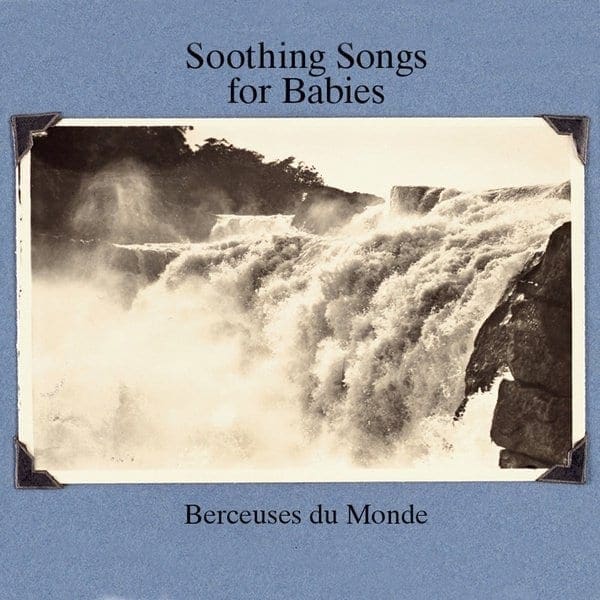What is a lullaby? Ethnomusicologist Madeleine Leclerc and musicians Piers Faccini and Robin Girod give us their takes.
In 1969, the ethnomusicologist Hugo Zemp held out his microphone in the village of Filinui in the Solomon Islands. He recorded a woman called Afunakwa performing a lullaby to her child – a “rorogwela” as they say in the Baegu language – one of the hardest moments to capture. Published a few years later by UNESCO’s Musical Sources, this little song against a forest background became a global sensation when it was sampled by the French group Deep Forest in 1992 for its track “Sweet Lullaby”, and would also be taken up shortly afterwards by the Norwegian Jan Garbarek, who mistakenly credited her as being of Pygmy origin. Beyond the questions of cultural appropriation inherent in these samples and the problematic iconography attached to them, we start by asking: what is a lullaby? And why do we have such a need to be lulled?
Deep Forest - Sweet Lullaby
Lullabies can be found everywhere: “all over the world and through the ages. And they never disappear,” begins Madeleine Leclerc, curator for sound heritage at the MEG, Geneva’s Ethnographic Museum, which brought out the wonderful compilation Soothing Songs for Babies – Berceuses du Monde in 2019, which includes Afunakwa’s original rorogwela. “They’re primarily vocal at first and usually use what are known ‘mamani’, onomatopoeia or sounds that allow you to have contact with children. There’s not much that is universal in the human race: language, music… Lullabies are language set to melodies. In Yoruba, for example, there’s no separate word for ‘music’, but the term ‘lullaby’ does exist. This helps us understand that they’re not of the same order”.
Music, of course, connects us to ourselves and to others. Research into finding better ways to understand and describe the phenomenon is ongoing. We know that the part of the brain affected by music is the seat of profound emotions. We also know that the set of frequencies that make up music interacts with all bodies – even those mistakenly believed to be motionless, as they are swarming with moving atoms; that a foetus hears from the seventeenth week of gestation; that no activity other than making music can elicit so many cognitive interactions in the brain; and that when we sing, our whole body vibrates and acts as an instrument. In young children, millions of neurones have yet to be assigned and are gradually being formed with experience.
Lullabies, with their repetitive, consonant and descending tones are a learning tool, a slow opening up to the wider world. A real “ritornello” – according to the concept created by the philosopher Gilles Deleuze and the psychoanalyst Félix Guattari in Mille Plateaux in 1980 – is a block of space and time within which the process of singularisation and individuation can take place. Through lullabies, the world is made habitable and safe. They serve to delimit the territories of the living and allow faster access to the sophroliminal state, the pivotal state between wakefulness and sleep, well known to sophrologists.
Piers Faccini - La plus belle des berceuses
“To sing a lullaby, you yourself also have to relax,” we are told by the songwriter Piers Faccini over the phone from his house in the Cévennes, where he recorded La plus belle des berceuses, a poetic book-cum-album released in 2017. “It’s about something fundamental, our earliest memories, the beating of our mother’s heart, voices through our body: lullabies are a portal that opens onto what is oldest in us. They suspend our dualistic mind. The repetition means we lose the beginning and end of the cycle. We revolve, we’re in a loop that is often ternary, a form of trance. You might well think I only make lullabies. I’m not trying to put people to sleep though, but to put them into the state of over-subjectivity that a lullaby in particular provokes, because it’s very beautiful in terms of energy, it’s about sharing and connection”.
Vidéo Robin Girod Berceuse vol.2
Multi-instrumentalist, songwriter and singer (Mama Rosin, Duck Duck Grey Duck…) and founder of the label Cheptel Records, Robin Girod has also released a two-volume album of lullabies: “Back then I was going through a difficult time, a sort of personality clash. So, I started playing little melodies to relax myself. I recorded them every night for a hundred days. It became a ritual, where, on a broad spectrum, there was also this idea of being lulled by the repetition. And like Deep Forest, it was the fastest selling album of my entire career!”
Marcel Proust, the great music lover, said: “We find in music feelings that are common to all mankind”. Let’s go back to 1992, the year of Deep Forest’s interplanetary track, which was also the year of the signing of the Maastricht Treaty and the creation of the European Union, the defining of Agenda 21 and of the first United Nations Earth Summit. Doesn’t it make sense, if you think about it, that a lullaby would top the Western charts in a rapidly expanding and globalising world? Could it be a natural and symbolic phenomenon, reassuring us as we sense the acculturation that goes with ultra-liberalism in full flow? Piers Faccini concludes: “Lullabies are actually the pinnacle of anything that can be done with music”.


